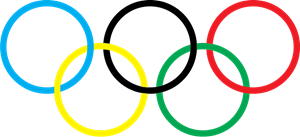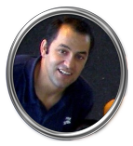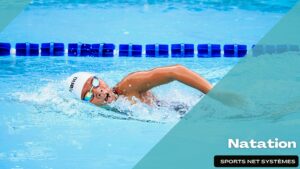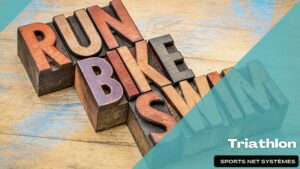The butterfly uses a simultaneous arm recovery over the surface of the water. It is this characteristic spread wing position that makes the butterfly such a favorite photo opportunity. It is important to use a relaxed recovery, however, variations in flexibility make each swimmer’s butterfly recovery slightly unique. In general, the recovery is close to the water, as the arms swing around wide from back to front. When the arms pass the shoulders, they realign to aim forward. The goal of the following recovery drills for the butterfly is to achieve a relaxed, direct, and well-aligned recovery for a better butterfly.
Pinkies-up
THE PURPOSE OF THIS DRILL
- Learning to maintain a pinkie up position
- Feeling a relaxed recovery
- Creating an arch with your arms over the water
HOW TO DO THIS DRILL
- Step 1 : – Standing in front of a mirror, bow forward so your upper body is horizontal. Beginning with your arms extended in front of you, do a butterfly arm stroke in the air, stretching forward then sweeping around, close through the middle, then quickly back and outward in a J. Freeze after the J. Notice that your pinkies are the high point of your hands.
- Step 2 : – Maintaining your pinkie-up hand position, sweep your hand around and forward through recovery, toward the starting position. Your arms and hands should be relaxed. Notice the arch that your two arms make, with your head in the middle. Notice too that as you sweep to the widest wing span, in order to maintain a pinkie-up position, you have to lower your chest into the water.
- Step 3 : – As your hands pass your shoulders, reach forward with your arms, still maintaining your pinkie-up position. Stretch forward, as if preparing to enter the water. Repeat the complete path of the butterfly arms several times looking in the mirror. Watch your hands maintain a pinkie-up posi- tion throughout their reco- very. Feel your arms and hands relax as they swing around and forward.
- Step 4 : – Now try it in the water. Push off the wall face down in the water, arms extended in front of your shoulders. After several dolphins, start your arm stroke, reaching forward, then sweeping around and back, closer under your belly. Accelerate toward the end of your stroke, pitching your palms outward and back to finish in a quick J as your feet snap down again. Your hands should clear the water, pinkies-up, several inches away from the sides of your body. Return them to the front in a relaxed wide arm swing, maintaining your pinkie-up position throughout the recovery. Extend your arms forward as your hands pass your shoulders, and enter the water slightly wider than your shoulders.
- Step 5 : – Do another stroke, tracing a wide to narrow, and deep to shallow line, and accelerating to the rear. Round off the finish in a J , then slide your hands out of the water pinkies first. Recover pinkies-up, creating a relaxed arch over the water. Practice several times until you achieve a relaxed recovery with your pinkies-up the whole way.
DRILL FEEDBACK CHART
| Problem | Modification |
| My elbows drag through the water during recovery. | This probably means your hands are recovering thumbs-up. In this position, your elbows are low and can drag through the water. Practice again, actively rotating your hands to the pinkie-up position and hold it throughout the recovery. |
| My hands start pinkie-up, but then turn over. | This means you are not relaxing during recovery, but instead pulling your hands forward. Try rotating your whole arm and shoulder forward to maintain the pinkie-up position. Try to initiate the recovery from higher in the arm. |
| My hands bump into each other in front. | As your hands pass your shoulders in the recovery, redirect your arms to reach forward rather than continuing the circular swing. It is important to align your stroke forward at the end of the recovery, and enter the water with your hands about shoulder width apart to avoid starting your next stroke from a position of weakness. |
The Flop
THE PURPOSE OF THIS DRILL
- Using your chest and shoulders to recover
- Finishing the recovery in a downhill position
- Feeling a relaxed recovery
HOW TO DO THIS DRILL
- Step 1 : – Push off the wall face for the butterfly. After several dolphins, start your arm stroke. Sweep your arms wide to narrow and deep to shallow, accelerating to the rear. Round off the end of the stroke and slide your hands out of the water pinkies first. Recover with a relaxed wide arm swing, maintaining your pinkie-up position. As your arms reach their widest position, your shoulders and head should be at the top of the arch of your recovery. Feel the swing of the recovery come from the shoulders and chest, rather than from the hands.
- Step 2 : – When your hands pass your shoulders, roll your shoulders forward. Then as your arms realign to reach forward at the end of the recovery, drop your chest downward into the water. Do it again. Stroke and exit the water at the rear pinkies-up. Initiate your recovery from the shoulders and chest, maintaining a pinkie-up position. As your hands pass your shoulders, roll your shoulders forward. Drop your chest down into the water as your arms reach forward. It should feel like your arms are flopping forward effortlessly.
- Step 3 : – Do several more strokes, focusing on your relaxed, pinkie-up recovery, powered from the chest and shoulders. At the mid- point in recovery, roll your shoulders forward, and drop your chest down as you realign your arms forward with each recovery. Notice that doing so adds speed to the end of your recovery. Notice too that as your shoulder and chest action flops your arms auto- matically into their forward entry position, your body achieves a downhill floating position.
- Step 4 : – Practice more, focusing on achieving a relaxed recovery from start to finish. Maintain a pinkie-up position each time. Flop your arms into their entry position using your shoulders and chest. Feel your body achieve a downhill position. Feel your arms landing in their forward entry position relaxed and aimed forward after each recovery.

DRILL FEEDBACK CHART
| Problem | Modification |
| I do not end up in the downhill position. | Make sure that you are maintaining a straight spine from hips through to your neck. You should be looking at the bottom of the pool and not forward. Your hips should be high and stable as you flop forward. |
| My arms enter the water closer than my shoulders. | Realign your arms forward earlier in the recovery. Make sure your are reaching forward with your elbows straight, so your whole arm is aligned in the direction you are trying to go. |
| When I enter the water, my chest is the lowest part of my body. | Good. This means you will start your next stroke from a position of power. |
Reaching to a Y
THE PURPOSE OF THIS DRILL
- Finishing recovery with your fingertips wider than your shoulders
- Aligning from the thumbs
- Positioning the hands to hold more water
HOW TO DO THIS DRILL
- Step 1 : – Push off the wall preparing to do the butterfly, straight spine, high hips, arms extended. Establish your rhythm with several dolphins, then start your arm str
oke, tracing question marks as you accelerate to the back. Round off your finish and recover pinkies-up. When your hands pass your shoulders, realign your arms to reach forward. - Step 2 : – At the end of the recovery, to prepare for the next stroke, drop your chest down, extend your arms forward, and push your elbows out straight. Point your thumbs to the far end of the pool. Notice that by doing so, your fingertips pitch outward. Do it again, actively aligning your recovery forward with your thumbs to finish your recovery. Feel your fingertips enter the water wider than your shoulders as you achieve the downhill position.
- Step 3 : – Do several more strokes, making a wide relaxed recovery, then redirect your arms to reach forward as your hands pass your shoulders. Drop your chest, press your elbows out straight, and align your reach to the far end of the pool with your thumbs. Fully extended, you should feel as if your arms form a Y on the surface of the water.
- Step 4 : – Practice more, finishing each recovery by aligning your thumbs forward and achieving a Y entry position. Notice that by simply pointing with your thumbs, your arms enter aligned outside your shoulders. Notice too that from the Y position, you are able to take hold of the water better with your hands as you begin each new stroke.

DRILL FEEDBACK CHART
| Problem | Modification |
| It feels too wide. | It is actually just your hands that are positioned wider than usual. Your arms are still aligned with your shoulders. This wide hand position enables you to catch and hold more water at the beginning of the stroke. |
| Entering this way my stroke misses the top part of the question mark. | There is very little forward motion produced by pressing outward. Entering in a Y, positions your hands to immediately start a productive sweep around and back. |
| My fingertips are not wider than my shoulders. | Remember to push your elbows out straight. It is important to create a forward line from your shoulders, through your elbow, and all the way to your thumbs. If your elbows are not straight, the forward line of your stroke will be compromised. |













